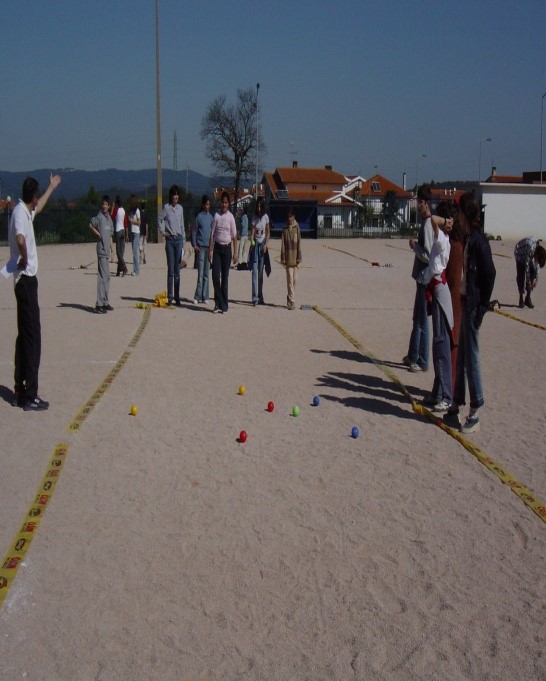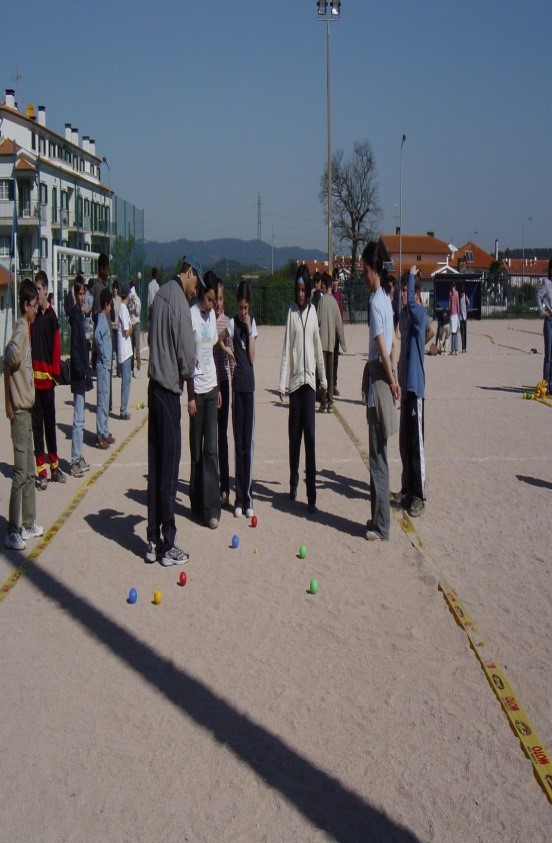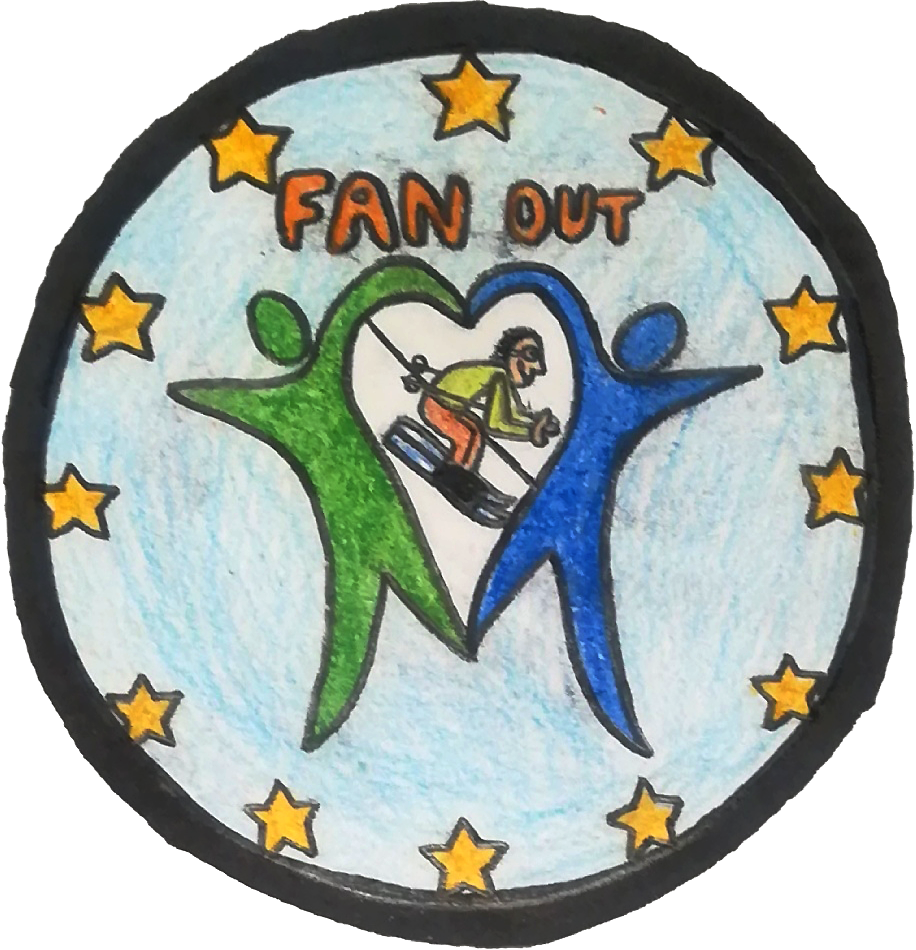LARANJINHA

BALL GAMES

GAME

ALL

TEAMS

NO CLUB

SOCIAL INTEGRATION ,SOCIAL SOCIALIZATION ,PSICOLOGYCAL RELAXATION, PHYSICAL MOTOR SKILLS IMPROVEMENT
laranjinha
How is it played? (Rules)
A number of players, two, three or four players, each having two wooden balls.
Sport or Game History and origins:
We know this game by the oral tradition, but in 1882, Pedro Aloy, write a book named “Recreios Colegiais†that mention different kind’s of this game and identified him as “laranjinhaâ€. This game is known as an adult men game, but now are child’s that play him. Played in taverns or on the field.
Submitted by
COIMBRA UNIVERSITY
Objective
Make a certain number of points by prior agreement with the participants, by the balls closest to the «laranjinha».
Benefits
Physical: Motor skills improvement (coordination, balance, agility, etc.)
Psychological: Psychological skills improvement (motivation, leadership, group cohesion, concentration, etc.)
Social: Socialization (social relations based on game/sport).
Social: Integration (intergenerational, integender, intercomunities, etc.)
Game’s materials
Two balls of wood or oranges or iron for each participant, and a small ball – the «small orange».
Is it related to an specific event or festivity ( festivals, religious or pagan celebrations)?
No.
Graphic material:









